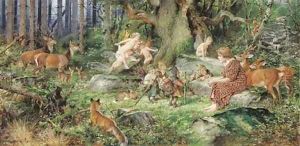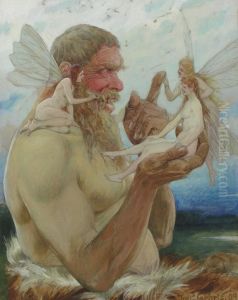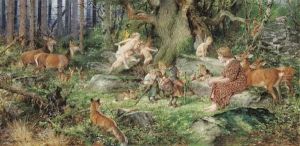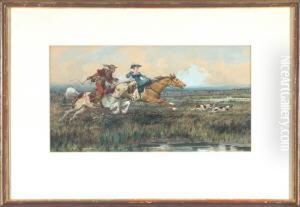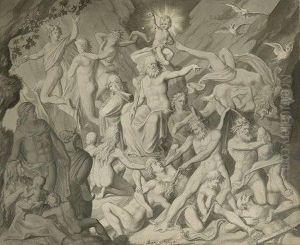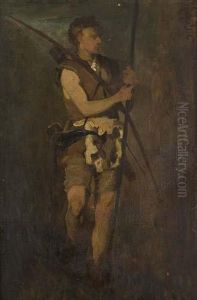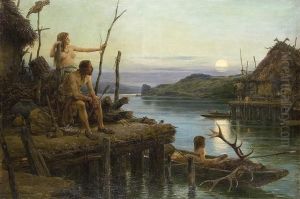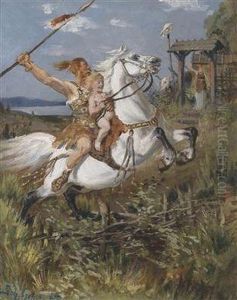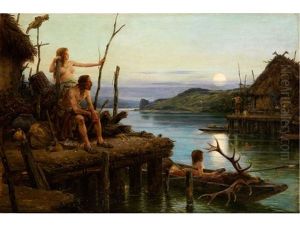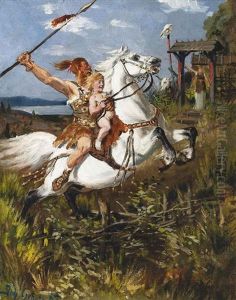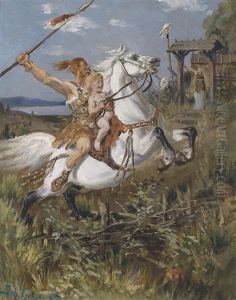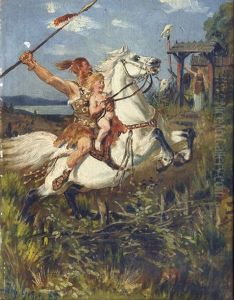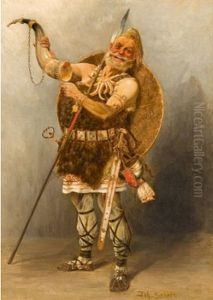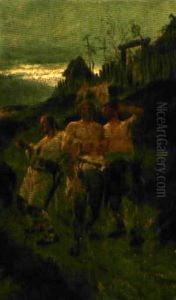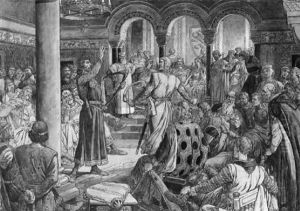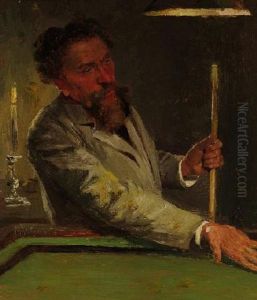Johannes Gehrts Paintings
Johannes Gehrts was a German painter and illustrator born on February 5, 1855, in Hamburg, Germany. His artistic journey began at a young age, influenced by the rich cultural environment of his hometown, which was one of the leading art centers in Germany during the 19th century. Gehrts studied at the Hamburg Kunstgewerbeschule (School of Applied Arts) and later moved to Düsseldorf, which was another prominent art hub in Germany, to further his education and skills.
In Düsseldorf, Gehrts honed his craft under the tutelage of the historical painter Eduard von Gebhardt and the battle painter Emil Hünten. During this period, he developed a strong foundation in academic painting, which was characterized by its adherence to traditional techniques and themes. Gehrts' work was heavily influenced by history, mythology, and folklore, which were popular subjects at the time. He became well-known for his depictions of scenes from Germanic and Norse mythology, often imbuing them with a romantic and dramatic flair that resonated with audiences of the era.
Gehrts' career as an illustrator gained momentum when he began contributing to various publications. His illustrations appeared in magazines, books, and periodicals, capturing the imagination of a wide readership. He illustrated works for notable authors and poets, thus contributing to the visual culture of the period. His work in illustration also extended to educational books, where his visuals served to complement and enhance the learning experience for young readers.
Throughout his life, Johannes Gehrts remained active in the arts community, participating in exhibitions and enjoying the patronage of collectors and art enthusiasts. His illustrations became iconic representations of the mythological and historical narratives they accompanied, and his style was particularly influential in the development of German illustration. Gehrts' ability to weave visual storytelling with rich detail and emotional depth made his work stand out, securing his place in the annals of 19th-century German art.
Johannes Gehrts passed away on August 7, 1921, leaving behind a legacy that has continued to be of interest to those who study the intersections of art, myth, and history. His body of work remains an important reference for understanding the visual culture of the time and the ways in which artists like him contributed to the popularization of mythological and historical themes in art.
